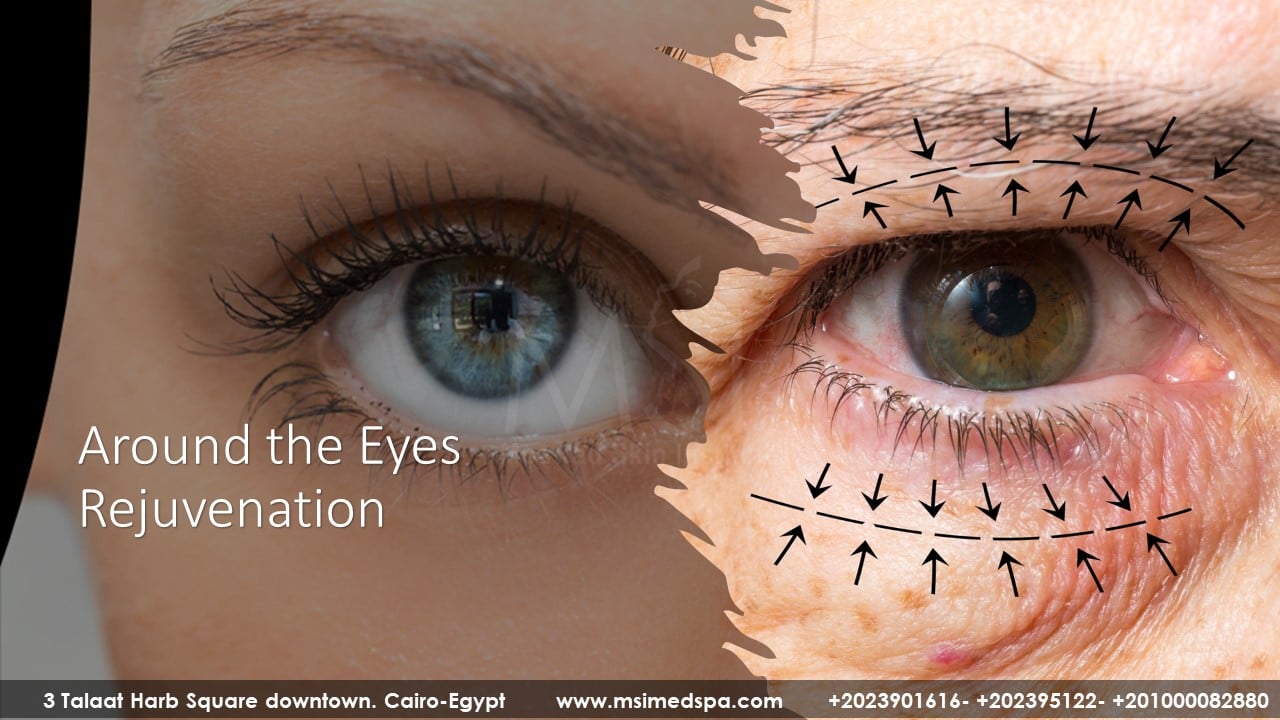Around the Eyes Rejuvenation
The periorbital region is one of the first facial regions to show signs of aging. It is critically important to understand precisely what feature of the periocular area is of the most concern to the patient before making therapeutic recommendations. Aging skin is characterized by the appearance of fine and coarse rhytides (wrinkles), rough and uneven texture, dryness, and changes in pigmentation. Fat atrophy occurs in the upper and lower periorbital region leading to progressive skeletonization of the orbit. Fat atrophy in the lower periorbital complex leads to a more prominent infraorbital rim, increasing the height of the lower eyelid and the overall soft tissue vertical dimension of the orbit. Typically, the nasojugal crease is more evident with aging, the malar fat pad has atrophied, the temples have hollowed, and the brow and upper lid have lost volume. In general, changes in skin texture, tone, laxity, or pigmentation are treated with physician skincare cosmeceuticals, chemical peels, lasers, or energy-based solutions. I can augment volume loss with the use of fillers, Autologous fat injection, and BOTOX A. Hyaluronic acid (HA) is the workhorse for the periorbital area because of its good efficacy and predictability and an excellent choice for correcting static rhytides that cannot be treated with BoNT alone and to recontour. Millifat, microfat, and nanofat with the addition of SVF and PRP for more massive volume deficits around the eyes may also be beneficial.
